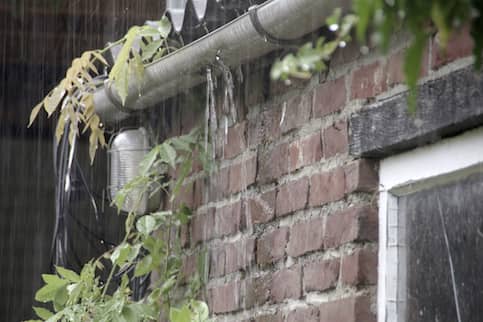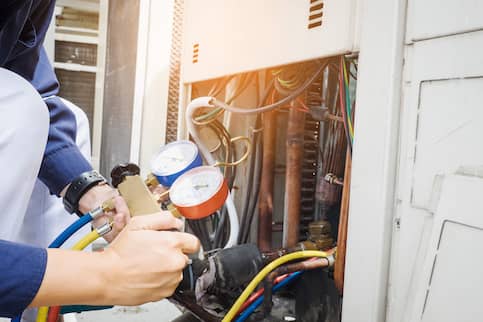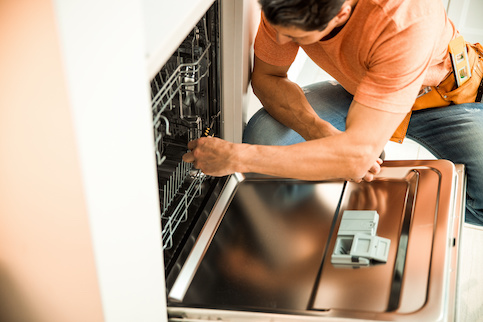How Residential Energy Credits Help You Save Green For Going Green

Residential energy credits provide a helpful tool for homeowners hoping to go green and be more eco-friendly. However, those considering how to be more eco-conscious may also be asking themselves: How can I implement a variety of different energy-efficient upgrades at home without incurring significant costs at the same time? Here, we take a closer look at how federal residential energy credits can help you lower your carbon footprint, reduce energy usage, and make helpful upgrades more affordable.
What Is The Residential Energy Credit?
The Residential Energy Efficient Property Credit provides an incentive for taxpayers to purchase alternative energy products and equipment for their home, such as solar hot water heaters and wind turbines.
In effect, it provides incentives at the federal government level for homeowners to make the switch to renewable energy sources or implement other energy efficient upgrades throughout their homes.
In addition, the Nonbusiness Energy Property Tax Credit applies to energy efficient upgrades (discussed below) and has been extended through 2023.
See What You Qualify For
Home Purchase
Home Refinance
Tap Into Equity
How Do Tax Credits Work?
Tax credits provide a dollar-for-dollar reduction in the amount of taxes that you might owe to the Internal Revenue Service (IRS) as part of your actual tax bill.
Note that they produce greater savings and are better for your finances than tax deductions, which conversely are an amount of money that can be subtracted from your gross income to lower your taxable income (and ultimately the amount of tax that you owe).
Residential energy credit also enjoys a marked advantage in that it can be rolled over into the next tax year. This can produce ongoing savings if you find that the amount of tax credit that you have earned exceeds the total amount of taxes that you are liable to pay to the IRS in a given year.
What Is The Renewable Energy Efficiency Tax Credit?
The renewable energy efficiency credit is a boon to taxpaying citizens, in that it can be used to help you make home improvements that produce more eco-friendly results on any properties that you own.
Qualifying Upgrades
Wondering how the credit applies to you? Endeavors that it can be applied to include the installation of solar electric property, solar water heaters, geothermal heat pumps, small wind turbines, fuel cell property, and (since December 31, 2020) qualified biomass fuel property expenditures paid or incurred in taxable years beginning after that date.
Only fuel cell property is subject to limitations here – specifically, $500 with respect to each half-kilowatt of capacity of the qualified fuel cell property.
Amount of Credit
As for how much you can take home in tax credits, this number is also impacted by the date when these renewable energy upgrades were completed:
- For upgrades completed by December 31, 2016, and before January 1, 2020, the amount of the tax credit is 30%.
- For upgrades completed by December 31, 2019, and before January 1, 2023, the amount of the tax credit is 26%.
- For upgrades completed after December 31, 2022, and before January 1, 2024, the amount of the tax credit is 22%.
Find A Mortgage Today and Lock In Your Rate!
Get matched with a lender that will work for your financial situation.
What Is The Nonbusiness Energy Property Tax Credit?
This federal tax credit also applies to other types of energy-efficient upgrades that you might wish to make, noting that the IRS distinguishes between these varying categories of home improvements.
Types of Upgrades
Tax credits are only available and apply here if equipment and materials used in these home improvements meet standards set by the Department of Energy.
Improvements must adhere to qualified energy-efficiency improvements, including:
- Home insulation
- Exterior doors
- Exterior windows and skylights
- Certain roofing materials
The second category that home improvements must meet standards around is residential energy property costs. It includes:
- Electric heat pumps
- Electric heat pump water heaters
- Central air conditioning systems
- Natural gas, propane or oil water heaters
- Stoves that use biomass fuel
- Natural gas, propane or oil furnaces
- Natural gas, propane or oil hot water boilers
- Advanced circulating fans for natural gas, propane or oil furnaces.
Value of the Credit
Qualified energy-efficient improvements generate 10% of their cost in tax credit. Materials qualify for this credit, but not labor, that’s associated with installations.
With regard to the second part of the credit, different types of property have different dollar limits (not a percentage of costs) associated with them – and certain property installation payments may qualify for credits here. However, note that there is also a cap on this portion of the credit at a $500 limit.
Claiming The Credit: Form 5695
Taxpayers wishing to claim the nonbusiness energy property credit and the residential energy efficiency credit will need to file IRS Form 5695. If you have questions about these credits, and their impact on your taxes, you may wish to speak with a qualified accounting and tax professional.
How Does The Residential Energy Efficiency Credit Work?
The Residential Energy Efficiency Credit allows you to make different types of energy-efficient upgrades – for example, installing solar panels, putting in an electric heat pump, etc. – then enjoy savings on them in the form of a tax credit. These credits can either be a percentage or dollar value of the total cost of these upgrades depending on which category of eco-conscious upgrade they fall under. In other words, if you install certain energy-efficient upgrades, a fraction of the expenses you paid out will be returned to you in the form of a tax credit.
Residential Energy Tax Credit FAQs
There are many frequently asked questions (FAQs) around residential energy tax credits. Some of the most common include:
Do I Get A Credit For Replacing My Roof?
If you choose to make roof replacements or repairs, they are eligible for a credit only to the extent that the materials used in these repairs or replacements qualify. By way of example, materials such as solar panels, roofing tiles, and shingles qualify, but any improvements made to the structure of the roof not specifically linked to energy-efficiency are not eligible for the tax credit.
Are There Other Sources Of Rebates Or Credits?
With an ever-growing number of government agencies, cities, counties, and homeowners pushing to go green, the short answer is absolutely. In fact, many state and local governments, as well as many manufacturers, offer credits and rebates to make the high cost of energy improvements more affordable.
Does The Credit Affect My Cost Basis In The Home?
Any tax credit received will reduce the cost basis that you hold in your home. In other words, if you should choose to sell your house at a later date, you must subtract the dollar amount that you have earned in residential energy tax credits from your cost basis. Be sure to speak with a tax advisor regarding your particular situation.
The Bottom Line: Go Green For The Planet, Your Home And Your Wallet
As it turns out, going green can actually save you a great deal of green as a homeowner: Who knew?
To this extent, a number of handy tax credit incentives can help you save big on your annual tax bill while reducing the cost to introduce eco-conscious home improvements.
In effect, a growing number of resources are helping to make energy-efficient upgrades more affordable – and providing an increasing number of opportunities for you to do good without having to break the bank as well.
Inside tip: Even more eco-friendly incentives may soon be coming as the new presidential administration works to address climate change as well.
Find A Mortgage Today and Lock In Your Rate!
Get matched with a lender that will work for your financial situation.











